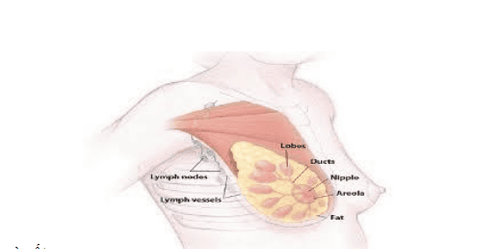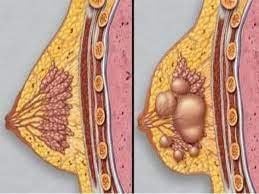This is an automatically translated article.
The article was professionally consulted by MSc Ta Quoc Ban - Obstetrician and Gynecologist - Department of Obstetrics and Gynecology - Vinmec Phu Quoc International General Hospital.During pregnancy and childbirth, your body goes through some pretty big changes. Your belly will get bigger, your hair will look shinier, and your skin may even become very typical of a pregnant woman. But that's not all. You may be surprised to learn that your breasts will also undergo many changes, even if they continue to change after you give birth.
1. The earliest signs of change
Many women find that their breasts become sensitive very early in pregnancy. For some women, this is the first sign that they are pregnant. If your breasts tingle or feel softer to the touch, you may be pregnant. It is a typical side effect caused by increased hormones in the body. However, if you notice any lumps anywhere around the breast, see a breast exam for a diagnosis if it's abnormal.
2. Nipple pain
Many women feel very sore nipples after each feeding, especially when the baby is new. Some women say that the nipple becomes red and pointed instead of round and smooth as before. If your baby latches on incorrectly when he feeds, the nipple becomes even more painful and the baby may not be able to get as much milk from the mother's breast as expected. Mothers should learn and practice more about the correct breastfeeding position. If the baby's posture improves, the nipple pain may also improve. You can also actively take care of your nipples after breastfeeding, for example applying a warm towel to ease the pain or massaging with a little breast milk will help soften the nipple and reduce pain. Breast tenderness will also naturally improve as you begin to get used to breastfeeding.3. Breast infections or painful lumps
Even if your baby latches on properly, you may still have a sore spot or even a painful lump. Lactation expert Carol Huotari says the cause is either a blocked milk duct, or the onset of an infection known as mastitis.Huotari is also the manager of the Breastfeeding Information Center at La Leche League International: "Any problem can be easily fixed and you don't need to stop breastfeeding at any time. It's completely safe to continue breastfeeding, even if you have an infection."
While early treatment will often help prevent a milk duct infection, treatment does not always give the desired results. So, if you have pain, breast tenderness, fatigue, fever, and some flu-like symptoms, you may have a breast infection.
Huotari says, typically, the method used to treat blocked ducts includes physical therapy along with bed rest. However, if your fever doesn't go down in 24 hours, you may need antibiotics to prevent infection. Call your doctor and continue breastfeeding. While it may sound unsafe to breastfeed while you have an infection, the fact that breast milk contains high levels of antibodies makes it safe for your baby."

4. Yeast infection or thrush
A yeast infection is a less annoying but still annoying condition on the surface of the breast skin. The culprit is thrush, a form of yeast infection that thrives in dairy environments. This infection will likely affect both you and your baby.Pediatrician Audrey Naylor says, signs of thrush include shiny red or pink skin, which is often itchy and possibly flaky. To find out if your baby has this infection, check for white spots on the inside of his cheeks, or sometimes a persistent diaper rash.
You may also notice you have symptoms of a vaginal yeast infection - a lumpy white discharge and extreme itching.
Naylor says that if you have a yeast infection, you don't need to stop breastfeeding. But you and your baby need treatment. See your doctor so that both you and your baby get the right treatment. You should not self-medicate at the pharmacy as some products may not be suitable for nursing mothers.
5. Milk engorgement, blocked milk ducts
Milk engorgement is normal for all nursing mothers. Milk engorgement occurs when milk begins to overflow into the breasts. The sensation of milk will be very clear from the second to the sixth day after the baby is born. Once milk begins to enter the ducts, lymphatic fluid and blood are also spilled in, causing the tissues in the breast to swell. Because that swollen tissue also enters the milk ducts, the ducts can sometimes narrow. When milk cannot come out, it builds up inside the breast and engorgement or blocked milk ducts occurs.To treat blocked milk ducts, it is best to place cold packs on the breasts, along with washed cabbage leaves. Leave these on your skin for about 20 minutes. Both can help reduce swelling and allow the milk ducts to open.
To prevent clogged milk ducts, before breastfeeding, you should also use a warm compress to apply around the breasts to make the milk ducts open and milk to come back faster.
Note, you should not massage with warm water in the shower when you are engorged. Warm water can be as effective as a hot compress in dilating blood vessels, increasing swelling and congestion in the breasts.

6. Learn about breastfeeding knowledge
Nursing mothers are often surprised to discover that their obstetrician or pediatrician knows very little about breastfeeding problems. Lactation consultant Katy Lebbing says that in the mid-1990s, 50% of medical school students graduated as doctors without a single day of training in breastfeeding.In a study published in the American Journal of Preventive Medicine, obstetricians at a California hospital answered only 53% of questions correctly on a simple 15-minute quiz about pregnancy. Breastfeeding. Only 14% of doctors said they felt confident in their knowledge on the topic.
If you have a question regarding any aspect of breastfeeding, including medical issues with breast health, you will usually get the fastest correct answer by contacting us. lactation consultant.
Usually, the hospital where you gave birth will have at least one lactation consultant. Try to chat and ask for their support if you have problems. Most lactation consultants are also available to advise you at home after you leave the hospital. Note that many mothers or even health workers who have given birth for the second or third time still lack knowledge about breastfeeding. Therefore, when asking for information, you need to choose the correct source of information. Self-study also helps a lot.
Vinmec International General Hospital is a high-quality medical facility in Vietnam with a team of highly qualified medical professionals, well-trained, domestic and foreign, and experienced.
A system of modern and advanced medical equipment, possessing many of the best machines in the world, helping to detect many difficult and dangerous diseases in a short time, supporting the diagnosis and treatment of doctors the most effective. The hospital space is designed according to 5-star hotel standards, giving patients comfort, friendliness and peace of mind.
Please dial HOTLINE for more information or register for an appointment HERE. Download MyVinmec app to make appointments faster and to manage your bookings easily.
Reference source: webmd.com













